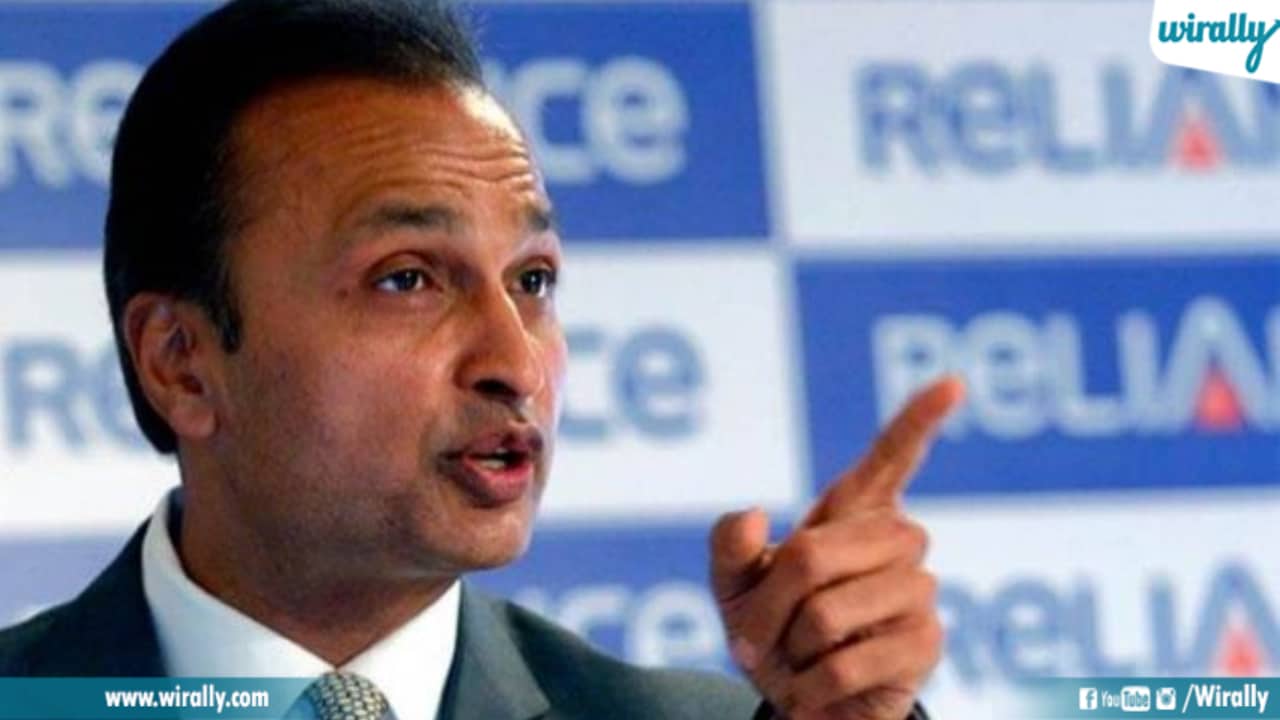From being one of India’s star money managers to a defaulter confronting a prison term, Anil Ambani’s business calamity is a typical example of unbridled desire, and dangerous undertakings turned out badly. What would be an ideal next step?
Around 2005. Several writers assembled at the Dhirubhai Ambani Knowledge City (DAKC) tech park at Kopar Khairne in Navi Mumbai on a Sunday, at the command of the media relations cell of Anil Ambani, the more youthful scion of the Reliance realm. Nobody appeared to mind that they had been brought in for a public interview on a Sunday. Both Anil and elder sibling Mukesh Ambani had a few such meet-ups over issues that eventually driven them to split the family business. At long last, Anil seemed to have what he needed the new-age telecom business, alongside the financial administrations and energy business, which held much more guarantee than the bread-and-butter petrochemicals operations, which shaped the centre of the gathering; this went to Mukesh. That day, Anil, a devoted long-distance runner, at that point in his mid-40s, was overflowing with certainty as he set out his arrangements in telecom.
 He appeared as though a hard worker, prepared to take advantage of the capability of the Indian versatile telecom revolution and, alongside it, take the fortunes of his gathering ADAG or the Anil Dhirubhai Ambani Group as it was then known, to extraordinary statures. Cut to 2019. Dependence Communications (RCom), Anil’s versatile communication adventure, has everything except ended up, even as he owes moneylenders Rs 48,000 crore. His businesses have contracted to fixed-line correspondences, server farm administrations and venture arrangements with incomes of Rs 4,684 crore in financial 2018, a long way from the Rs 19,000 crore signed in 2008. Market capitalization (a proportion of the organization size and investor bid) has plunged from a pinnacle valuation of Rs 1,65,917 crore in January 2008 to a little more than 1 per cent of that esteem at Rs 1,687 crore on February 18, 2019.
He appeared as though a hard worker, prepared to take advantage of the capability of the Indian versatile telecom revolution and, alongside it, take the fortunes of his gathering ADAG or the Anil Dhirubhai Ambani Group as it was then known, to extraordinary statures. Cut to 2019. Dependence Communications (RCom), Anil’s versatile communication adventure, has everything except ended up, even as he owes moneylenders Rs 48,000 crore. His businesses have contracted to fixed-line correspondences, server farm administrations and venture arrangements with incomes of Rs 4,684 crore in financial 2018, a long way from the Rs 19,000 crore signed in 2008. Market capitalization (a proportion of the organization size and investor bid) has plunged from a pinnacle valuation of Rs 1,65,917 crore in January 2008 to a little more than 1 per cent of that esteem at Rs 1,687 crore on February 18, 2019.
The rise and fall of one of India’s most discussed businessmen in barely ten years is a reading material investigation on how unbridled aspiration, spreading oneself far in business and high utilizing of obligation to fuel developments can cut down business domains. Mainly if the business condition likewise turns adverse. When Dhirubhai Ambani, father of Mukesh and Anil, kicked the bucket intestate after a monstrous stroke in July 2002, the Rs 28,000 crore business realm he had worked more than 25 years and which had made him a sweetheart of the capital business sectors following RIL’s public posting in 1977, looked set to move flawlessly under the control of his two children.The two had shared responsibilities when the senior Ambani was still executive. After he passed away, Mukesh, a chemical engineer with a management degree from Stanford, became RIL chairman, and Anil, an MBA from Wharton, its managing director. The siblings were required to maintain the business together. It was their dad’s inheritance, all things considered, one worked without any preparation by Dhirubhai, once a petrol pump assistant in Yemen.
 Through a progression of in backward and forward coordination moves in petrochemicals, Reliance turned into the nation’s biggest producer of fibre, a crude material for the material business. Nonetheless, it before long turned out to be evident that the change from perished father to children would be anything besides smooth. The main indications of friction between the siblings showed up in mid-2005, with a part of the media detailing, without giving names, of an impending split in the family.
Through a progression of in backward and forward coordination moves in petrochemicals, Reliance turned into the nation’s biggest producer of fibre, a crude material for the material business. Nonetheless, it before long turned out to be evident that the change from perished father to children would be anything besides smooth. The main indications of friction between the siblings showed up in mid-2005, with a part of the media detailing, without giving names, of an impending split in the family.
The altercation between the siblings proceeded until their mom Kokilaben stepped in and handled a harmony settlement in April 2005, upheld by outside mediators, for example, chartered accountant S. Gurumurthy and banker K.V. Kamath. According to the understanding, disclosed again on a Sunday, the petrochemicals business under Reliance Industries would go to Mukesh. In contrast, the telecom business, which Mukesh had supported up until now, would go to Anil. The siblings additionally consented to a no-contend arrangement. Mukesh would not enter the telecom business, while Anil would avoid energy and petrochemicals. The most recent trigger for RCom’s inconveniences was the disappointment of a potential arrangement Anil struck to offer the telecom advantages for Mukesh’s Reliance Jio for Rs 18,000 crore.
The arrangement fallen after the Department of Telecommunications demanded that Jio acknowledge RCom’s back payments as well, which Jio was reluctant to do.
In an announcement, RCom stated, “Notwithstanding the entry of more than a year and a half, moneylenders have gotten zero continues from the proposed resource monetization plans, and the general obligation goal measure is yet to make any progress. Appropriately, the board concluded that the organization would look for quick track goal through NCLT.”
The Debt Pile-up
Cornered in his telecom business and tested by an extreme business condition in his different endeavours, Anil had no alternative except to begin selling resources. He had to consider auctioning off Reliance Power resources because of immense ventures worth a vast number of crores were left hanging fire either for the absence of monetary conclusion or accessibility of crude material.
The association’s 24,000 MW of intensity age plants are closed due to non-accessibility of gas. Investments to the tune of almost Rs 1.2 lakh crore are trapped, Anil revealed to Reliance Power investors in September 2018.
The safeguard business he entered in 2015 by purchasing Pipavav Defense and Offshore Engineering for Rs 2,082 crore is buried in a debate. The opposition Congress has blamed Anil for having wrongly profited in the $8 billion Rafale warrior stream counterbalances bargain. The main business that is by all accounts doing moderately well is the budgetary administrations business under Reliance Capital, comprising of firms dealing with asset management, life and general insurance, home finance and wealth management.
The genuine difficulty began around 2014 when the gathering organizations started to feel the brunt of its huge obligation (absolute gathering organizations’ commitment remained at Rs 1.72 lakh crore as on September 2018).
It at that point started to auction resources and once in a while whole organization. In August 2018, Reliance Infrastructure, which had lofty tasks including the air terminal express metro hallway in New Delhi added to its repertoire, sold the Mumbai city power appropriation business to individual industrialist Adani for Rs 18,800 crore.
This exchange was required to support Reliance Infra’s financials by reimbursing part of its over Rs 23,000 crore debt.
Even though Reliance Power had been granted agreements to construct three plants, it could fabricate just one at Sasan in M.P. It has contended in the courts that it needs consent to dig more coal for the venture, without which it might bring about misfortunes and may need to desert the task. In 2014, Reliance Entertainment sold its once acclaimed multiplex chain Big Cinemas to pare its debt.
Inquiries sent to the Reliance Group on bunch organizations’ arrangements to pare debt, and their future standpoint went unanswered. All the organization would share was a public statement on RCom about its stop concurrence with loan authorities.
What Next?
Did Anil’s organizations endure business deteriorations, or would they say they were mismanaged? Observers accept both these elements were in the blend; they additionally discussed the absence of vision and core interest.
“If you have a truly profound vision, you keep things coming and need to save yourself fluid enough for the subsequent stage of venture and support in business,” says consultant Ashvin Parekh.
The majority of the organizations Anil acquired were money-hungry ones and requested total improvement and investments on a periodic basis.
“That is especially valid for telecom. For monetary administrations, it is an account of utilizing and the nature of your portfolios.” Mukesh, then again, has not just maintained a profound spotlight on his centre organizations, yet also included vitality, retail and telecom throughout the long term, making a business behemoth through a problematic cycle. He has additionally encircled himself with close assistants and trusted profes¬sionals, including Manoj Modi, Nikhil and Hital Meswani (children of Rasiklal Meswani, an establishing overseer of Reliance Industries) and P.M.S. Prasad.
“Every business has its difficulties,” says Shriram Subramanian, originator and C.E.O. of In Govern, an intermediary warning firm.
“There have been sectoral issues in force and framework. However, there was likewise unbridled desire and development designs that came to nothing.”
When financing came simple, bunch organizations raised immense obligations; however, they couldn’t reimburse them as organizations confronted stoppages.
“Today, money is difficult to get, making working together even more intense,” Subramanian clarifies.
What next for Anil Ambani? What would be the best next step? Subramanian feels there will be a combination inside the gathering. A portion of different firms that are doing severely – Reliance Infra and Reliance Power- – may meet RCom’s destiny, and decide on the indebtedness course, he says. Some others, including resource the executives firm Reliance Nippon Life Asset Management, have better possibilities ahead. But cases can change and Anil, who brought his elder son Anmol as a director of the financial services business in 2016, should guarantee that he is both able and prudent in snatching the next enormous opportunity that comes to his direction.
Also Read: Worst Remakes Of Telugu Films In Tamil


















